#Tantalum
Text
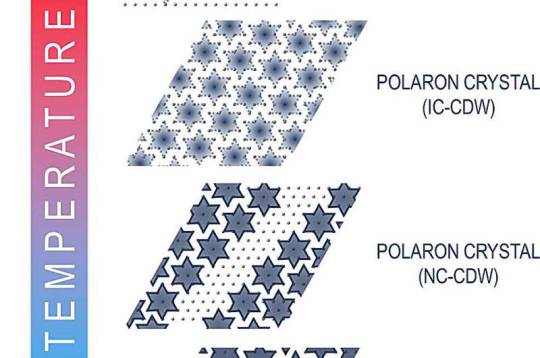
Putting a new spin on 1T phase tantalum disulfide: Scientists uncover a hidden electronic state
Research often unfolds as a multistage process. The solution to one question can spark several more, inspiring scientists to reach further and look at the larger problem from several different perspectives. Such projects can often be the catalyst for collaborations that leverage the expertise and capabilities of different teams and institutions as they grow.
For half a century, scientists have delved into the mysteries of 1T phase tantalum disulfide (1T-TaS2), an inorganic layered material with some intriguing quantum properties, like superconductivity and charge density waves (CDW).
To unlock the complex structure and behavior of this material, researchers from the Jozef Stefan Institute in Slovenia and Université Paris-Saclay in France reached out to experts utilizing the Pair Distribution Function (PDF) beamline at the National Synchrotron Light Source II (NSLS-II), a U.S. Department of Energy (DOE) Office of Science User Facility located at DOE's Brookhaven National Laboratory, to learn more about the material's structure.
Read more.
#Materials Science#Science#Tantalum#Sulfides#Sulfur#Layered materials#Materials characterization#Transition metal dichalcogenides#Charge density waves
12 notes
·
View notes
Photo

I’m a week late for the last SS exchange, but got it done regardless! This is Tantalum for @statisticaltaters !
288 notes
·
View notes
Text
Round 5 - Period 6, D-Block
#polls#periodic table#chemistry#lutemium#hafnium#tantalum#tungsten#rhenium#osmium#iridium#platinum#gold#mercury
2 notes
·
View notes
Text
Round 1 - Part 3 - Matchup 2
Tantalum vs Selenium
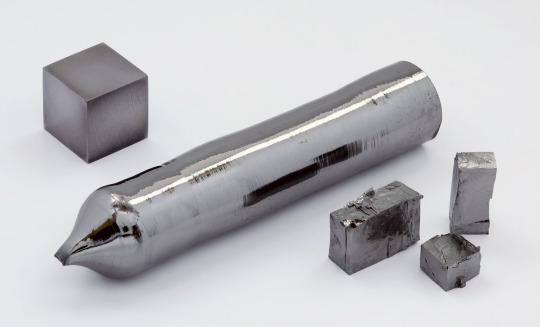

17 notes
·
View notes
Text
TRANSITION METALS:
ROUND 2 POLL 1
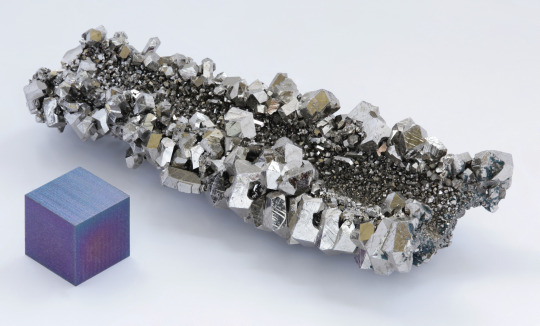
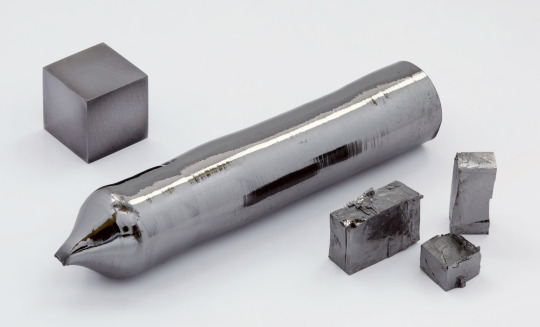
NIOBIUM:
Used to make stainless steel, MRI scanners, and surgical implants
TANTALUM:
Hypoallergenic, meaning it doesn't irritate skin, even for people who are allergic to metal
7 notes
·
View notes
Text
About tantalum...What supports smartphones (Essay)

Tantalum is one of the rare metals. It is mainly used as an ultra-small capacitor to send a stable current to the CPU of mobile phones and other devices.
Tantalum can be found in the United States, Canada, Australia, and the Democratic Republic of the Congo (formerly Zaire). If you think of Congo, you probably have a good general education. Yes, Congo has been in a civil war since 1998. More than 3 million people out of a total population of 50 million have already died as victims of the war. And one of the causes of this civil war is the small parts of the mobile phones that we use casually.
That perspective is an advantage supported by the absurdity of the country of origin. I also feel that I am deeply immersed in a capitalist society. In any case, was the war damage so great that they had to abandon their field crops? It feels like the farmers affected by the Ashio Mine Poisoning Incident are now working at the Ashio Smelter. Also, The report prepared by UN experts listed Western companies that directly participated in the exploitation of Congo's resources and presented a scheme for transporting raw materials to the West. It all starts with local leaders (who buy the ore from miners for an average of $10 per kilogram), and a private plane, usually manned by Russian and Ukrainian aviators, is chartered to fly to Rwanda (Kigali).) or the capital of Uganda (Kampala). Subsequently, the cargo purchased by "state-owned" companies whose owners are, without exception, Uganda (Yoweri Museveni), relatives of the President of Rwanda (Paul Kagame), and senior military officials, is transported by transport aircraft (e.g. the airline SabenaCargo), transported to European capitals and reprocessing plants.
In this way, tantalum flows around the world. The biggest demand is for capacitors for mobile phones. We too are benefiting from it. I think this is exactly what it means to plunder/to be plundered. There is such drama in one smartphone.
By the way, I own tantalum as a precious metal.
Rei Morishita
タンタルについて・・・スマートフォンを支えるもの
タンタルというのはレアメタル(稀少鉱物:プラチナとかもレアメタル)の一つです。主に携帯電話などのCPUに安定した電流を送るために、超小型コンデンサーとして使われています。
このタンタル、どこで採れるかというと→アメリカ・カナダ・オーストラリア・コンゴ民主共和国(旧ザイール)などです。コンゴと聞いてピンと来る人は一般教養オッケーです。そう、1998年からコンゴは内戦状態にあるのです。総人口5000万人のうち300万人以上がすでに戦火の犠牲となって帰らぬ人となっています。そして僕たちが何気なく使っている携帯電話の中のほんの小さな部品が、この内戦の原因の一つでもあるのです。
その視点というのは、原産国での不条理に支えられたメリットなのですね。私もとっぷりと資本主義社会に漬かっているのだな、と思います。それにしても、畑作を放棄せねばならぬほどの戦災なのでしょうか。まるで、足尾鉱毒事件の被害農民が、足尾精錬所で働くことに当たるような気がします。また、
国連の専門家により準備された報告書には、コンゴ資源の収奪に直接参加した西側企業が挙げられ、欧米への原料の運搬図式が提示された。全ては、現地指導者(彼らは、1kg当たり平均10ドルで採掘者から鉱石を買い付けている。)から始まり、通常、ロシア人及びウクライナ人飛行士が乗った民間機がチャーターされ、ルワンダ(キガリ)又はウガンダの首都(カンパラ)に貨物が運搬される。その後、その所有者が例外なくウガンダ(ヨヴェリ・ムセヴェニ)とルワンダ大統領の親戚(ポール・カガメ)及び軍高官である「国営」企業により購入された貨物は、輸送機(例えば、航空会社SabenaCargo)で、欧州の首都及び再加工工場に運搬される。
このように、タンタルは、世界に流れていくのです。そして、もっとも大きな需要は、携帯電話のコンデンサー。私たちもその恩恵に与っているのですね。これこそ、収奪および被収奪なのだと思います。スマートフォン一台には、そんなドラマがあるのです。
ちなみに、私は貴金属として、タンタルを所持しています。
#tantalum#smartphone#rei morishita#essay#Ashio Mine Poisoning Incident#Uganda#Rwanda#capacitors#precious metal
4 notes
·
View notes
Text

Here we go! Tantalum returned in 2022 with a refreshed look and I still cannot be happier about this. A million thanks again to @shinerai-blog for the lines. You made this transformation possible. 💕
16 notes
·
View notes
Text

whatever the hell happened in DBE
3 notes
·
View notes
Text
For most of the history of civilisation we’ve exploited a pretty small selection of metals, including copper and tin for bronze-age tools, iron for steel, and lead, gold and silver. Our repertoire has begun to diversify over the past century or so, with the widespread use of aluminium and other new metals. But in the past few decades the number of different metals we wield in our technological society has absolutely exploded. A modern smartphone contains more than 30 different elements. These include carbon and hydrogen in the plastic casing, silicon for the microchip wafers, and copper wiring and gold contacts. But there are also small amounts of a large number of other metals, each exploited for its own particular electronic properties, or for the tiny, powerful magnets used in the speaker and vibration motor. This means that if you own a smartphone, you have in your pocket a substantial fraction of all the stable elements of the periodic table. And it’s not just modern electronics that demand a huge diversity of different metals. So too do the high-performance alloys used in the turbines of a power station or aircraft jet engine, or the reaction-accelerating catalysts that we use in industrial chemistry for refining oil, producing plastics or synthesising modern medicinal drugs. Yet most of us have never even heard of many of these critical metals – elements with exotic names like tantalum, yttrium or dysprosium.
The concern is that unlike widespread resources like iron or nitrogen, several of these elements crucial to the modern world may become prohibitively scarce. These have become known as the endangered elements. In response to the Mendeleev anniversary, the European Chemical Society (EuChemS) has released a version of the periodic table (see above) to highlight the elements that are most at risk over the coming decades.
Helium, for example is considered to be under serious threat in the next 100 years. It is the second most abundant element in the universe, but preciously rare on Earth because it is light enough to simply escape from the top of our atmosphere. The helium we do use is effectively mined from deep underground, usually along with natural gas, as it is produced as radiation particles from the decay of elements like uranium. Helium is very useful – as a cooling liquid for the superconducting magnets in hospital MRI scanners, for example, or as an extremely light gas for weather balloons and airships. But once it leaks into the air it is lost for ever, and there are concerns over meeting supply in the future. With this perspective, its frivolous use in party balloons seems almost painfully wasteful.
Many of these endangered elements are the sort of exotic metals used in modern electronics, and indeed the supply of 17 elements needed for smartphones may give cause for concern in years to come. Particularly worrying is the fact that many of those facing potential scarcity are exactly the elements we need for the green technologies to replace our reliance on fossil fuels – those used in rechargeable batteries, solar panels, and the powerful magnets within the motors of electric cars or generators in wind turbines. Gallium, for example, is needed for integrated circuits, solar panels, blue LEDs and laser diodes for Blu-ray Discs. Indium is used in everything from TVs to laptops, and in particular the touch-sensitive screens of modern smartphones and tablets. It is estimated that at current usage rates, available indium will be used up in 50 years and will become very expensive to collect and purify.
Except for helium, the problem isn’t that these scarce elements actually become lost to the planet, but that they become too expensive to mine or too dispersed to recycle effectively. “Rare earth elements”, such as yttrium, dysprosium, neodymium and scandium, are actually relatively plentiful in the Earth’s crust but aren’t geologically concentrated into rich ores. This means that they can’t be extracted economically in many areas of the world. And once they have been manufactured as tiny components within an electronic device, they can be even harder to reclaim and recycle. EuChemS calculates that 10m smartphones are discarded or replaced every month in the EU alone, and so serious action is needed to tackle these challenges of elemental scarcity.
#current events#environmentalism#capitalism#manufacturing#science#chemistry#mining#tantalum#yttrium#dysprosium#helium#indium#neodymium#scandium#dmitri mendeleev#periodic table
6 notes
·
View notes
Text
Day 2: Punishment

Featuring: Tantalus the Tantalum, Niobe the Niobium.
0 notes
Text
Newly developed material gulps down hydrogen, spits it out, protects fusion reactor walls
Adam Malecek - Newly developed material gulps down hydrogen, spits it out, protects fusion reactor walls:
0 notes
Text

Researchers discover dual topological phases in an intrinsic monolayer crystal
Dual topological phases have been discovered in an intrinsic monolayer crystal, a finding that reveals new and unique rule-bending properties in a quantum material, an international team of scientists led by Boston College physicists reported recently in the online version of the journal Nature.
The discovery of a dual topological insulator introduces a new method for creating topological flat minibands through electron interactions, which offer a promising platform for exploring exotic quantum phases and electromagnetism, the team reported.
"We have experimentally produced high-quality, atomically-thin samples of TaIrTe4 and developed corresponding electronic devices," Boston College Assistant Professor of Physics Qiong Ma, the lead author of the report. "What's particularly intriguing is our discovery of not just one, but two topological insulating states, beyond the predictions of theory."
Read more.
#Materials Science#Science#Topology#Crystals#Topological insulators#2D materials#Tantalum#Iridium#Tellurium
8 notes
·
View notes
Photo

Sketch Wip for this month’s exchange event. I need to fix the body line of action because it’s like, horrible, but otherwise liking how it’s coming. This is @statisticaltaters Tantalum!
114 notes
·
View notes
Photo

The beauty of minimalism: A plain Tantalum ring that makes a statement with its simplicity. . . . #WeddingRing #WeddingBands #WeddingJewelry #EngagementRing #BridalJewelry #BrideToBe #GroomToBe #ForeverRing #LoveRing #CommitmentRing #RingGoals #WeddingBliss #WeddingSparkle #RingSelfie #SayYesToTheRing #tantalum #tantalumring (at Southern Highlands NSW) https://www.instagram.com/p/CpzpJcPLMea/?igshid=NGJjMDIxMWI=
#weddingring#weddingbands#weddingjewelry#engagementring#bridaljewelry#bridetobe#groomtobe#foreverring#lovering#commitmentring#ringgoals#weddingbliss#weddingsparkle#ringselfie#sayyestothering#tantalum#tantalumring
0 notes
Text

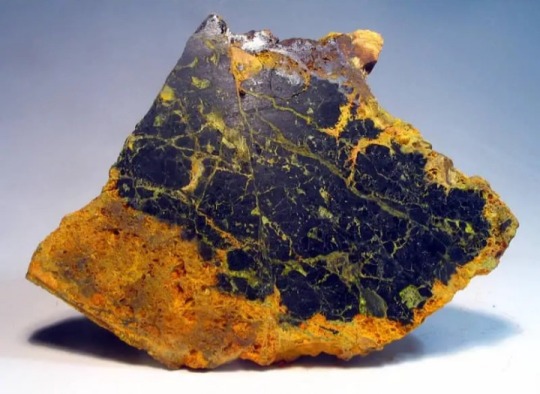
#periodic table of elements#periodic table poll#tantalum#uranium#polls#bracket poll#chemistry#science#round 1#branch d
1 note
·
View note
Text
TRANSITION METALS:
ROUND 1 POLL 2


TANTALUM:
Hypoallergenic, meaning it doesn't irritate skin, even for people who are allergic to metal
DUBMIUM:
Before the name Dubnium was given to commemorate Dubna, the town which it was discovered, the names Nielsbohrium and Hahnium, after Niels Bohr and Otto Hahn respectively.
2 notes
·
View notes